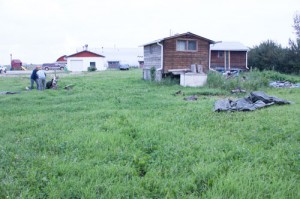Located in the middle of the beautiful prairie, the natural environment has always been a huge source of inspiration to us. As we have developed our little mill over the past four decades, minimizing our impact on the environment has been a huge focus of ours. Recently, we've found the ideas and principles of permaculture helpful in guiding this development.
In the most basic terms, permaculture is an environmental design system that draws from patterns in nature and focuses on human development with, or within, nature rather than against it. Over the last couple years, several of us in the mill family have taken permaculture design courses with Verge Permaculture, a permaculture education and consulting company based in Calgary, and now, with a solid understanding of the concepts, we're starting to apply them to the mill. One of the projects we are starting with is the development of a food forest combined with a natural dye-plant garden over by the bunkhouses. The bunkhouses location feels like a good place to start because it is a fairly sheltered part of the property, so fruit trees, shrubs, and tender dye plants should prosper, and a food forest would provide a great atmosphere for folks staying in the bunkhouses.
We are lucky enough to have the assistance of wife/husband duo Gerda and James Edwards with this project. They are both professional horticulturists with a long history of working through the framework of permaculture and, as added bonus, they have a passion for wool and natural dyeing (we met James when he came for a natural dye workshop we were teaching here at the mill, back in 2001).
We got the first installation of this project in the ground; a couple of pear trees, gooseberries, nanking cherries, black currants, and yarrow. We also started blocking off areas for the second installation with tarps to kill back the grass. We'll be planting those areas in the spring and, hopefully, next fall we'll be able to harvest a bit for dyeing wool.
Stay tuned for updates as this project progresses!













